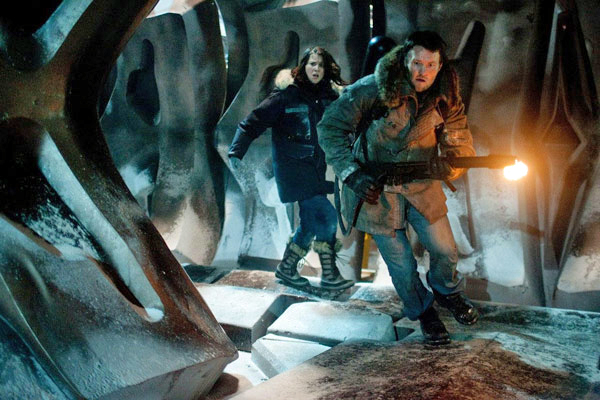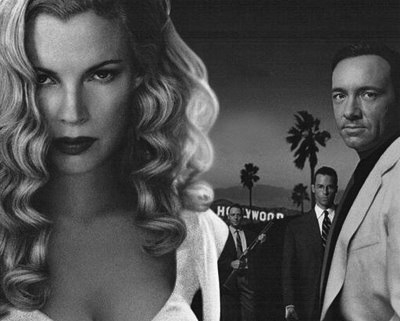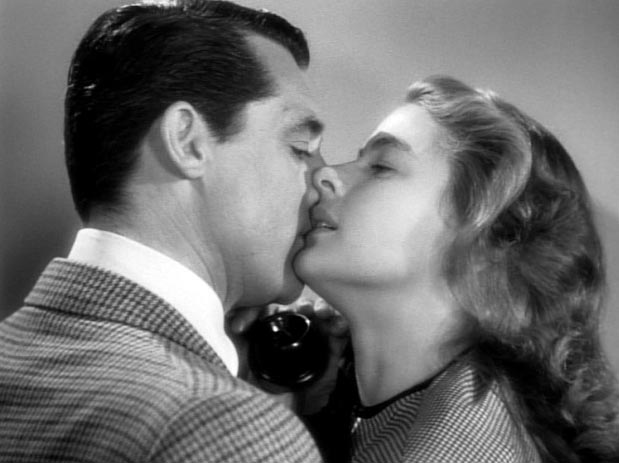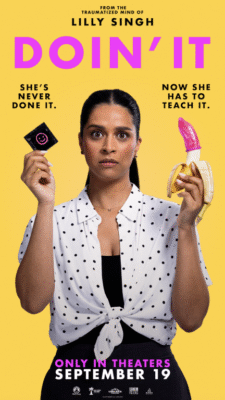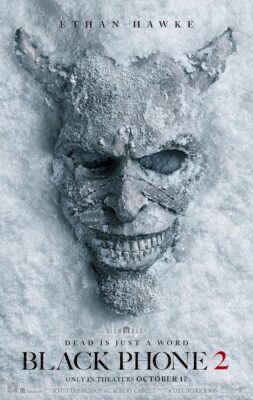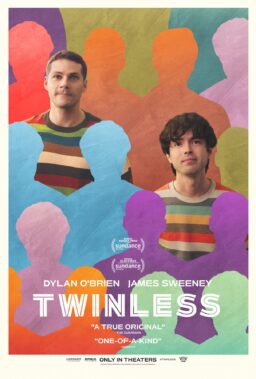Q. Re the problem of motion sickness in films that make use of hand-held cameras: Actually the easiest way to get over it is just close your eyes and the sensation passes quickly. (Doug Fletcher, RN, Journal of Nursing Jocularity, Mesa, AZ)
A. What do you suggest for Pauly Shore movies?
Q. The ads for David Lynch‘s “Lost Highway” in New York and Los Angeles use the quote “Two Thumbs Down!–Siskel & Ebert.” Your comment? (Joe Demanowitz, Entertainment Weekly)
A. It’s creative to use the quote in that way. Obviously there’s a lot of disagreement about the film, and by playing up the discussion, the filmmakers encourage people to go see it for themselves. These days quotes in movie ads have been devalued by the “quote whores” who supply gushing praise to publicists weeks in advance of an opening. By playing up the controversy, “Lost Highway” is making a legitimate use of critics’ opinions.
Q. I contributed an entry to your Glossary about the Explosion Loop, where one explosion is always shown three times from different angles and the sound track goes “Boom, Boom, Boom.” Well, the other night on the “Profiler” TV show, they dropped an overhead light that hit the floor three times from three different angles and went “Smash, Smash, Smash.” (If it’d been a Chinese lantern it would have gone “Bong, Bong, Bong,” right?) What’s going on? Is that supposed to heighten the dramatic effect? Or were they in need of extra footage because the show ran short? Us civilians ain’t smart enough to understand the Hollywood mind. (Don Howard, San Jose, CA)
A. I would suggest you simply drop this subject, but I know what would happen then.
Q. How has the cultural portrait of Asian-Americans evolved in film, and how do you see this changing in the near future? (David S. Jung, Lake George, New York)
A. Asian-Americans in films are at the same place that African-Americans were 20 years ago, before the development of a generation of big stars gave them the clout to play roles other than an “African-American role.” To date, most Asian-American actors (except for Jason Lee) have been typecast in Asian roles. One problem is that while there are enough black filmgoers to make a film financially successful, every Asian-themed film has to be a crossover. Asian actors are often cast in “colorblind” supporting roles, but when they’re specifically Asian, there’s brutal typecasting: the men are routinely seen as brains or nerds, and women as exotic sex objects. Reality-based characters have been rare, although the success of “The Joy Luck Club” was encouraging.
Q. Why are producers willing to spend $100 million and years out of their lives to create a strip of celluloid 35mm wide ,when for just $500,000 more they could have a strip of celluloid 65mm wide? When the late David Lean was in the planning stages for shooting “Nostromo” in 65mm a few years back, Robert Harris (the restoration guy) came up with a cost breakdown that was only $350,000 more than shooting 35mm. This included the cost of negative and developing, dailies, etc., but not cameras (which are not that much higher) and things like needing more lights, shipping costs, etc. It’s probably gone up since then but so has everything. Half a million is probably fair. (Steve Kraus, Park Forest, IL.)
A. In other words, why are so few movies made in the slightly incorrectly-named 70mm format? An excellent question. The current “Hamlet” is in 70mm, and the most recent wide-gauge film before that was “Far and Away,” in 1992. A frame of 70mm film offers approximately four times as much area as 35mm, providing dazzling colors, detail, and clarity. I was reminded of that last week while watching “2001: A Space Odyssey” in 70mm at the Cyberfest celebration of HAL 9000’s birthday, at the University of Illinois at Urbana. The movie looked dazzling. But many theaters, especially in gargantoplexes, lack 70mm projection facilities, and that may limit the number of possible playdates.
Q. The movie “Three Men and a Baby” was based upon on French film with the same theme. But was the French version based upon an earlier American film, “Three Godfathers,” starring John Wayne? (Rene Roy, Saskatoon, Saskatchewan)
A. Funny you should ask. Yes, “Three Men and a Baby” (1987) was a remake of the French film “Three Men and a Cradle” (1985)–and represents one of the few cases where the remake was dramatically better than the original. But in my original review of the French film, I wrote: “It is clear as day that ‘Three Men and a Cradle’ has been stolen–lock, stock and barrel–from John Ford’s Western classic “Three Godfathers,” a 1948 masterpiece in which outlaws John Wayne, Harry Carey Jr. and Pedro Armendariz find an abandoned baby in the desert and try to get it to safety. The sight of Wayne applying wagon grease to the little tyke’s behind is all by itself worth more than every foot of this miserable French retread. “
Q. My son went to Hillsboro High School in Nashville with Harmony Korine, author of the screenplay of “Kids,” and I know he spent many years here. Yet he is always billed as a NYC street kid in his PR hype. He also had some sort of hunk photo in one of the teen girls mags that made him sound like a New York City dropout. I guess attending a normal high school in a southern town isn’t as cool as the life he has invented for his talk show life. (Jay Walker, Nashville, Tenn.).
A. I met Korine at Cannes when “Kids” premiered and remember him telling me about leaving home and living with his grandmother (on Long Island, I think) and then hanging out with kids like those in the movie. He said his parents were “now living in Nashville,” but I thought that meant they’d moved there. I liked him. He seemed like a smart self-promoter. He directed a movie named “Gummo” that’s coming out this year. I will examine his biography in the press packet with great interest.
Q. Could you tell me the names of some good directors that began as American Film Institute interns? I often see the credit at the end of movies, and I’m curious about the success of this method of teaching direction. (Andrew Bissland, Manitou Springs, CO).
A. They’re not interns but “fellows,” according to the AFI’s Seth Oster. They go through a two-year graduate program, often after already having made films. Among the directors who are graduates: Jon Avnet (“Fried Green Tomatoes“), Julie Dash (“Daughters of the Dust“), Carl Franklin (“One False Move“), Amy Heckerling (“Clueless“), Tim Hunter (“River's Edge“), David Lynch (“Blue Velvet“), Terrance Malick (“Days of Heaven“), Victor Nunez (“Ruby in Paradise“) Ron Underwood (“City Slickers“), Ed Zwick (“Glory“).
Q. In a recent Answer Man you had an item about the mystery voices in “Beavis and Butt-head Do America.” As you know, a lot of celebs lend their voices anonymously, but now the Internet Movie Database has blown their cover. The uncredited voices include Greg Kinnear as FBI Agent Bork; David Letterman (under the pseudonym Earl Hofert) as Motley Crue Roadie #1; Demi Moore as Dallas, and Bruce Willis as Muddy Grimes. David Spade is also in the movie, although I’m not sure what character he played. (Robert Haynes-Peterson, Boise, Idaho)
A. Given the ten characters listed in the credits and the four you’ve identified, how many are left? And why has David Spade grown so modest all of a sudden?

